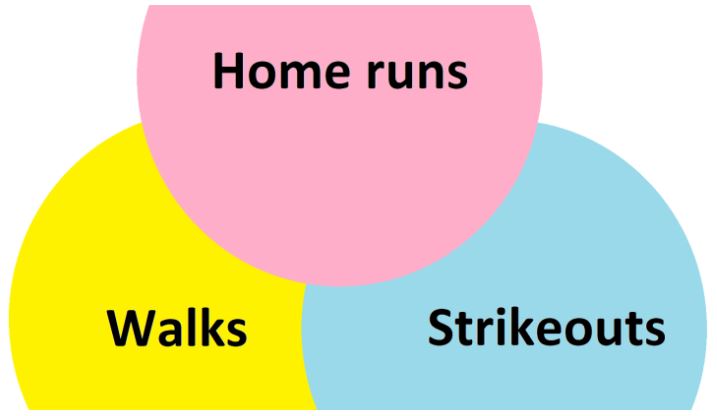
The Three True Outcomes Approach and the Complex Reality of Modern Baseball Strategy
By Ken Cherryhomes
In recent years, analytics have taken grip of batting strategy. Through this, the Three True Outcomes approach has emerged, emphasizing home runs and walks while marginalizing strikeouts. Yet, an in-depth exploration of statistical trends spanning two distinct eras prompts a reconsideration of the assumed dominance of this strategy.
From 2004 to 2011, known as the post-steroid era, the average runs scored per game stood at 4.62. Comparatively, the subsequent era (2016-2023), marked by the Three True Outcomes, averaged 4.56 runs per game. This modest variance questions the direct translation of power hitting into increased offensive efficacy.
Examining hits per game further complicates the debate. The post-steroid era witnessed 9.02 hits per game, exceeding the reduced average of 8.4 hits per game from 2016 to 2023. This decline underscores concerns that overemphasis on power hitting and acceptance of strikeouts may impede contact-based offensive strategies integral to run production.
Analyzing leading hitters’ averages across these eras dispels claims that today’s pitching prowess solely accounts for lower league-wide batting averages. In the post-steroid era, the top batter averaged .356, while the modern era’s elite maintained a competitive .343. This parallel suggests elite hitters transcend eras, and pitching advancements may not be the sole factor behind perceived batting declines.
Acknowledging consistent top batter success challenges the notion that modern power emphasis counters improved pitching. The invariance of run production, hits per game, and strikeouts suggests strategic choices rather than just pitching advancements shape offensive outcomes.
While the Three True Outcomes champions home runs and walks, scrutinizing its impact on walks reveals intriguing shifts. Despite the approach’s promotion, average walks per game declined from 3.27 (2004-2011) to 3.22 (2016-2023), sparking questions about the anticipated walk increase.
The central tenet of this approach advocates aggressive pursuit of home runs and walks, potentially at strikeouts’ expense. However, statistical intricacies counter a direct correlation between this strategy and projected results. The relatively stable run production, reduced hits per game, and unchanged average walks per game challenge the notion that focusing solely on power equates to offensive dominance.
Furthermore, delving into Campbell’s Law, which cautions against quantitative corruption due to decision-making pressure, offers a novel lens. The interplay of this principle with walks and reckless power-hitting pursuits introduces an added layer to modern baseball strategy.
Ultimately, baseball’s evolution requires reevaluation of successful offensive strategies. Beyond power hitting’s allure, a holistic approach encompassing contact, and situational awareness remains essential to the sport’s essence. The objective should remain the same, with a focus on power and walks, but a key improvement can be made when we balance the emphasis on power, with an equal emphasis on reducing strike outs, and outs in general, which will result in an increase in walks, hits and runs scored when a proper balance is struck.
Please send questions and comments to:
